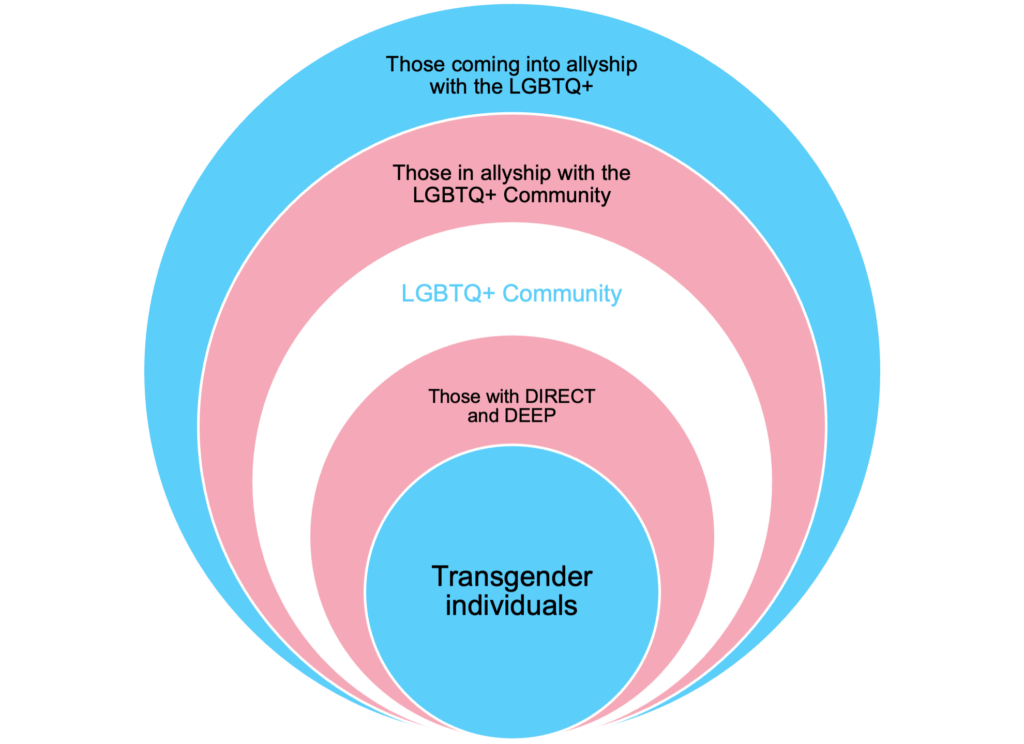When I was asked to contribute to this publication on the topic of activism, I originally created an infographic highlighting some quick takeaways and some guidance for approaching activism generally. Then I forgot to turn it in. When I was reminded of the ask, I revisited the graphic and realized that was not what the world of activism in higher education needed at this point in our history; and to be fair, I am not sure if what I have put together is what is needed either.
It has been a while since I have taught on this topic or had a discussion with a student about activism and practicing allyship, but I think two fundamentals remain:
- Society needs a wider understanding or definition of activism.
- Individuals need to understand their role in various systems of oppression and how that position should inform their activism.
Provide a wider definition of activism.
When it comes to broad concepts like activism, it can be difficult to define what “counts” as activism. Frequently, folks will provide an example of an action, such as a large group protest, rather than a definition. Without a widely accepted definition of activism, it is hard to know, and more importantly process, one’s actions. For this reason, I am a huge advocate of Mendes and Chang’s (2019) definition of activism (p. 60):
“Sacrificial acts that lead to individual and collective liberation in pursuit of social justice”
There are a couple of key elements of this definition to highlight:
- This definition does not require success but instead recognizes that any action leading toward liberation is activism. This definition honors all the little steps that lead to systemic change.
- This definition does not require physical or public action. To only recognize physical or public forms of activism (marches, protests, sit-ins) fails to acknowledge the barriers those actions pose for individuals with physical, psychological, or emotional disabilities (Stewart & Williams, 2019). Further, it ignores the potential danger people with minoritized identities may face by participating (Stewart & Williams, 2019). To be clear, the vast majority of the time, white people and individuals with class privilege, among other dominant identities, do not face those dangers.
- This definition emphasizes the need for sacrifice. Sacrifice is another term that means a lot of things to a lot of different people. Activism does not always require extreme sacrificial acts, but the act should have some component of sacrifice to it—such as time, money, energy, personal comfort, etc. Keep in mind that these sacrificial acts should not be arbitrary, they should lead toward liberation, not derail it.
In addition to having a broad definition of activism, it is important to recognize and utilize a variety of examples of actions. For instance, activism includes:
- Existing in spaces where one’s identity is not in the majority.
- Having hard conversations with family and friends about social justice causes, beliefs, or movements.
- Educating oneself on social movements, the communities impacted by different issues, and the historical context of how a situation has evolved.
- Actively listening to those directly impacted by an issue, and honoring their wishes on what actions should be taken.
- Choosing which businesses to support based on their practices or beliefs.
Recognize the rings of impact and one’s placement within them.
Activism is focused on the movement toward liberation, which means there is an oppressive force to oppose. In some ways, it is easy to conceptualize or visualize oppression as a natural disaster. Think of any natural disaster; there tends to be an epicenter or location that takes the brunt of the damage. Depending on the disaster, the epicenter can be a singular location or a wide path of destruction. Moving away from the epicenter, the damages and impact of the disaster decline.
Applying this concept of rings of impact to activism and social movements, it is important to understand the following:
- Oppression creates rings of impact.
- The further you are away from the epicenter, the more one must listen and understand before making a sacrificial act.
- One’s relation to the epicenter can change and evolve; within a singular oppression, moving closer or further away from the epicenter.
This is best explained with an example. Figure 1 below illustrates the rings of impact related to transphobic bills.

In this example, transgender individuals are at the epicenter of the oppression. They are the ones with the most to lose and the most to gain in this journey to liberation. The first ring from the epicenter encompasses individuals who have direct and deep relationships with transgender individuals. This includes their partners, friends, family, kids, support systems, and other loved ones. These are individuals who know and experience the oppression directly and have the clearest understanding outside of those at the epicenter. Further out, but still impacted by the oppression, is the larger LGBTQ+ community. The third ring includes those in allyship with the LGBTQ+ community. The last ring comprises those who have the desire or the potential to step into allyship with the LGBTQ+ community but may be early in their journey. It is important to understand that these are not hard walls between the rings; at any point, someone can step into a different ring closer or further away from the epicenter.
In terms of what these rings mean in practice, the further away from the epicenter someone is, the less direct knowledge and lived experience they have. Additionally, it is easier for folks further from the epicenter to walk in and out of a movement, where others may not have the privilege of distancing themselves from the oppression. Therefore, distance requires more self-education and active listening. When practicing allyship with a community, one’s approach to the movement should not be arriving and trying to take the lead. Instead, folks should use their privilege to advocate for and magnify the voices of those most impacted.
References
Mendes, J., & Chang, A. (2019). Undocumented and afraid: Expanding the definition of student activism. In D. L. Morgan & C. H. F. Davis III (Eds.), Student Activism, Politics, and Campus Climate in Higher Education (1st ed., pp. 60–76). Routledge.
Shenberger, M. A. Undergraduate Student Activism And Engagement In The Leadership Process. no date. Florida State University, 2022.
Stewart, T. J., & Williams, B. M. (2019). Nuanced activism: A matrix of resistance. In A. Dache, S. J. Quaye, C. Linder, & K. M. McGuire (Eds.), Rise up! Activism as education (pp.201-244). Michigan State University Press.
About the Author
 Michaela Shenberger, Ph.D. (she/her) earned her Master’s and Doctoral degrees in Higher Education at Florida State University and her research focused on the connection between leadership identity development and student activism identity. During her time at FSU, Michaela worked as the Associate Director of the Hardee Center for Leadership and Ethics in Higher Education and with the Department of Fraternity and Sorority Life as an instructional designer assisting with the Sorority Recruitment onboarding process. Michaela also worked in the Leadership Learning Research Center teaching undergraduate courses on leadership and ethics. While Michaela is no longer in the higher education realm, she is an alumna member of Alpha Sigma Alpha and keeps an eye on student activism movements and institutional responses.
Michaela Shenberger, Ph.D. (she/her) earned her Master’s and Doctoral degrees in Higher Education at Florida State University and her research focused on the connection between leadership identity development and student activism identity. During her time at FSU, Michaela worked as the Associate Director of the Hardee Center for Leadership and Ethics in Higher Education and with the Department of Fraternity and Sorority Life as an instructional designer assisting with the Sorority Recruitment onboarding process. Michaela also worked in the Leadership Learning Research Center teaching undergraduate courses on leadership and ethics. While Michaela is no longer in the higher education realm, she is an alumna member of Alpha Sigma Alpha and keeps an eye on student activism movements and institutional responses.




